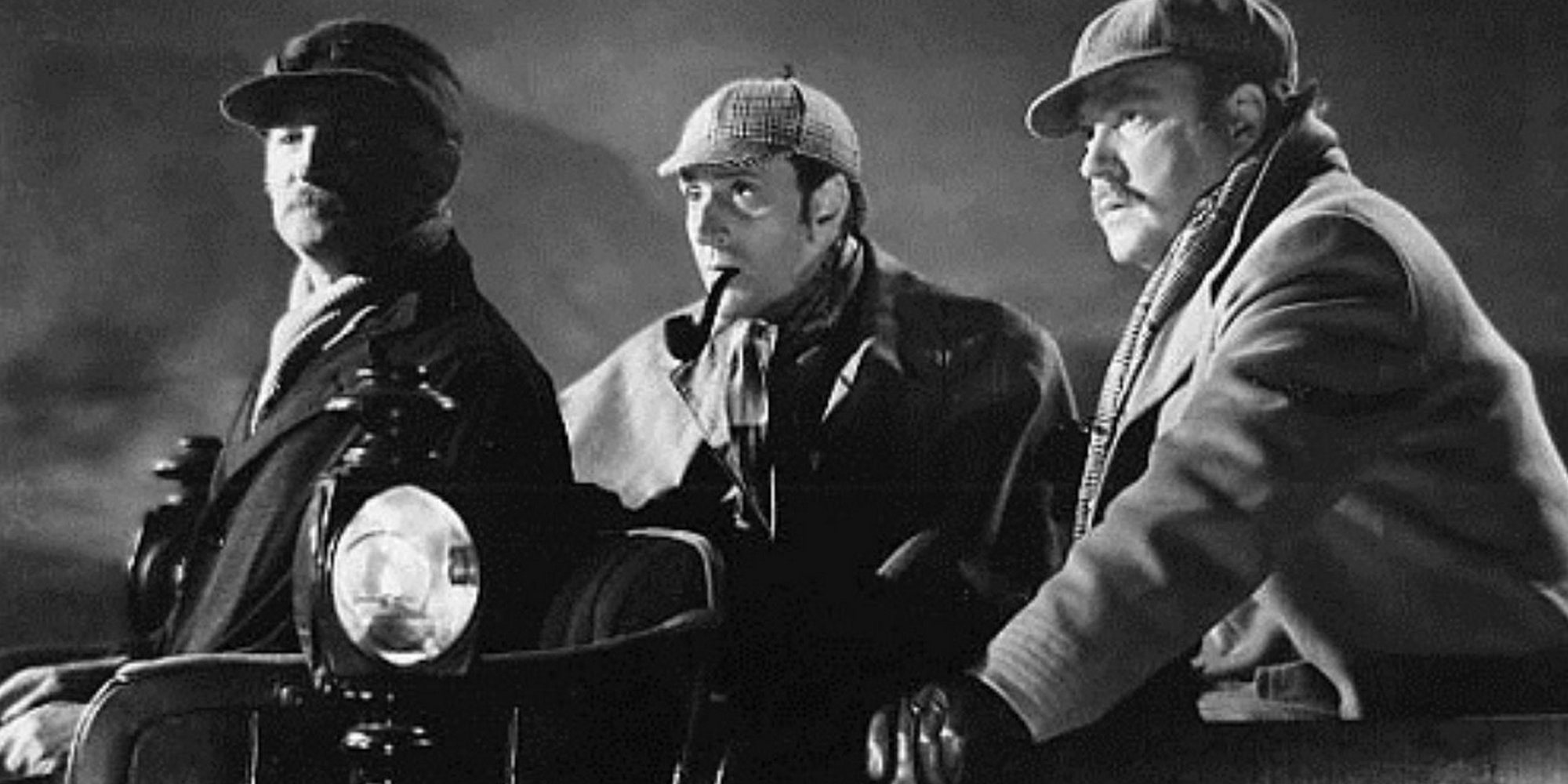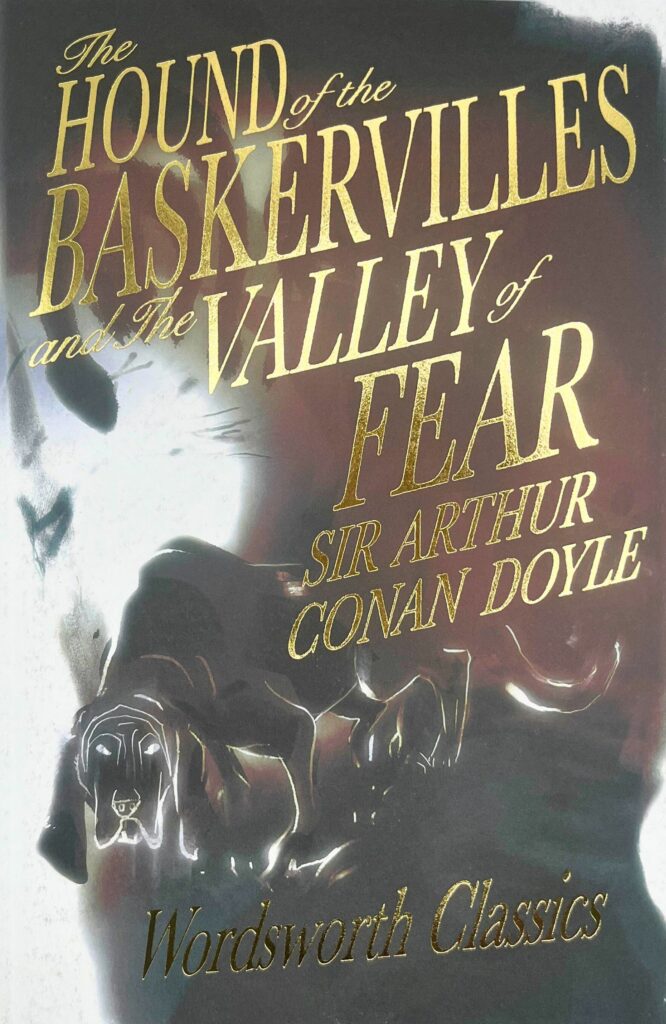
‘… the huge jaws seemed to be dripping with a bluish flame…’
David Stuart Davies tells how reading ‘The Hound of the Baskervilles’ made him a lifetime devotee of the master detective.
Around the age of twelve, I encountered The Hound of the Baskervilles in the school library – the novella that is, not the phantom beast itself. I devoured the book and from that moment I was sold into Sherlockian slavery for the rest of my life.
This introduced me to Sherlock Holmes and led me not only to read the whole of the Holmes canon – four novels and fifty-six short stories – but also to begin to write about Holmes both in fact and fiction. At present, I have written numerous articles about the character, along with three books dealing with his screen career, two plays and eight novels. Holmes has cast a long warm shadow over my life since I first picked up that copy of The Hound. Through Sherlock, I have not only made many friends around the world but he was also responsible for me meeting my wife, who also shares my passion for the man from Baker Street.
So what is it about The Hound of the Baskervilles which makes it so special and enthralling? Well, to begin with, it is a cunning detective story combined with a dark gothic romance. Doyle was a great storyteller who excelled in creating mood and atmosphere. As a result, the barren Devonshire terrain where most of the narrative takes place is wonderfully evoked and becomes almost one of the characters of the novel. Watson’s first view of the moor sets the tone for the dark mood that suffuses the story:
‘Over the green squares of the fields and the low curve of a wood there rose in the distance a grey, melancholy hill with a strange jagged summit. Dim and vague in the distance like some fantastic landscape in a dream.’
Of course, part of the appeal of the novel also lies in Conan Doyle’s skilful blending of the disparate elements. To begin with, we are presented with the tried and tested features that make all Holmes stories compelling reading – the cosy Baker Street opening where Holmes demonstrates his brilliant deductive powers; then we have the concerned client who relates the bizarre details connected with a baffling mystery; and of course, there is a cruel and subtle villain. There is mist, murder and mayhem – but there is also a powerful extra ingredient that strengthens the mixture making the novel unique in the Holmes canon. That extra ingredient is the world of the supernatural. In this story not only has Sherlock Holmes to contend with an unscrupulous flesh-and-blood villain, but also a spectral hound whose ghastly shape is ‘outlined in flickering flame.’ It was a stroke of genius to plunge the most rational and scientific of detectives into the realm of ghosts and monsters. Doyle was aware that if the reader believed for one second that the great Sherlock Holmes was threatened by supernatural forces heart-stopping suspense was assured.
The idea for The Hound of the Baskervilles was conceived on a holiday in Norfolk. In March 1901 Doyle had taken a golfing break with his friend, the journalist Bertram Fletcher Robinson. Staying at the Royal Links Hotel near Cromer they spent time between rounds of golf discussing various topics of interest, including folklore. The story goes that one night in the hotel Robinson recounted the legend of a spectral hound that supposedly haunted the barren countryside of Dartmoor near where Robinson lived. Doyle was greatly taken with this account. It sparked his imagination. He thought that a ghostly hound threatening a noble family would form the basis of a very exciting novel. He later visited Robinson at his Dartmoor home to pick up some local colour. It is interesting that the coachman who drove Doyle around the moorland was called Baskerville. The novel began to take shape but in working out the plot, Doyle realised that he needed a central character who would unravel the mystery – a catalyst figure who would bring together the various strands of the narrative. In other words, a brilliant detective. At this time, the author had killed off Holmes in the story The Final Problem by having him tumble over the Reichenbach Falls locked in the arms of his mortal enemy, the criminal mastermind Professor James Moriarty. However, somewhat reluctantly Doyle decided to bring back Sherlock Holmes for one last case, although he was adamant that the Baskerville affair took place before the detective fell into the swirling waters of the Reichenbach Falls. This was reminiscence, not a resurrection.
The Hound of the Baskervilles was serialised in the Strand Magazine first. It ran for nine instalments from August 1901 to April 1902. The first part concluded with perhaps the most chilling interchange in all crime fiction:
‘Footprints.’
‘A man’s or a woman’s?’
Dr Mortimer looked strangely at us for an instant, and his voice sank almost to a whisper as he answered: ‘Mr Holmes, they were the footprints of a gigantic hound.’
The possibility that this creature is of supernatural origin hovers over all the events in the novel, with Doyle teasing his readers that for the first time Sherlock Holmes may be dealing with something really beyond his comprehension. When the hound finally makes its appearance, the author does not disappoint:
‘A hound it was, an enormous coal black hound, but not such a hound as mortal eyes have ever seen. Fire burst from its open mouth, its eyes glowed with a smouldering glare, its muzzles and dewlap were outlined in flickering flame. Never in the delirious dream of a disordered brain could anything more savage, more appalling, more hellish, be conceived than that dark form and savage face which broke upon us out of the wall of fog.’
There have been many screen versions of this novel, but none have managed to capture the richness and horror of Doyle’s description of the beast.
It is this wonderful brew of disparate ingredients, along with the rattling page-turning pace and the magnetic central character, that captured the heart of my twelve-year-old self and continues to do so along with thousands of other readers both young and old.
Books associated with this article
